How To Become A Fighter Pilot – Step by Step (2024)
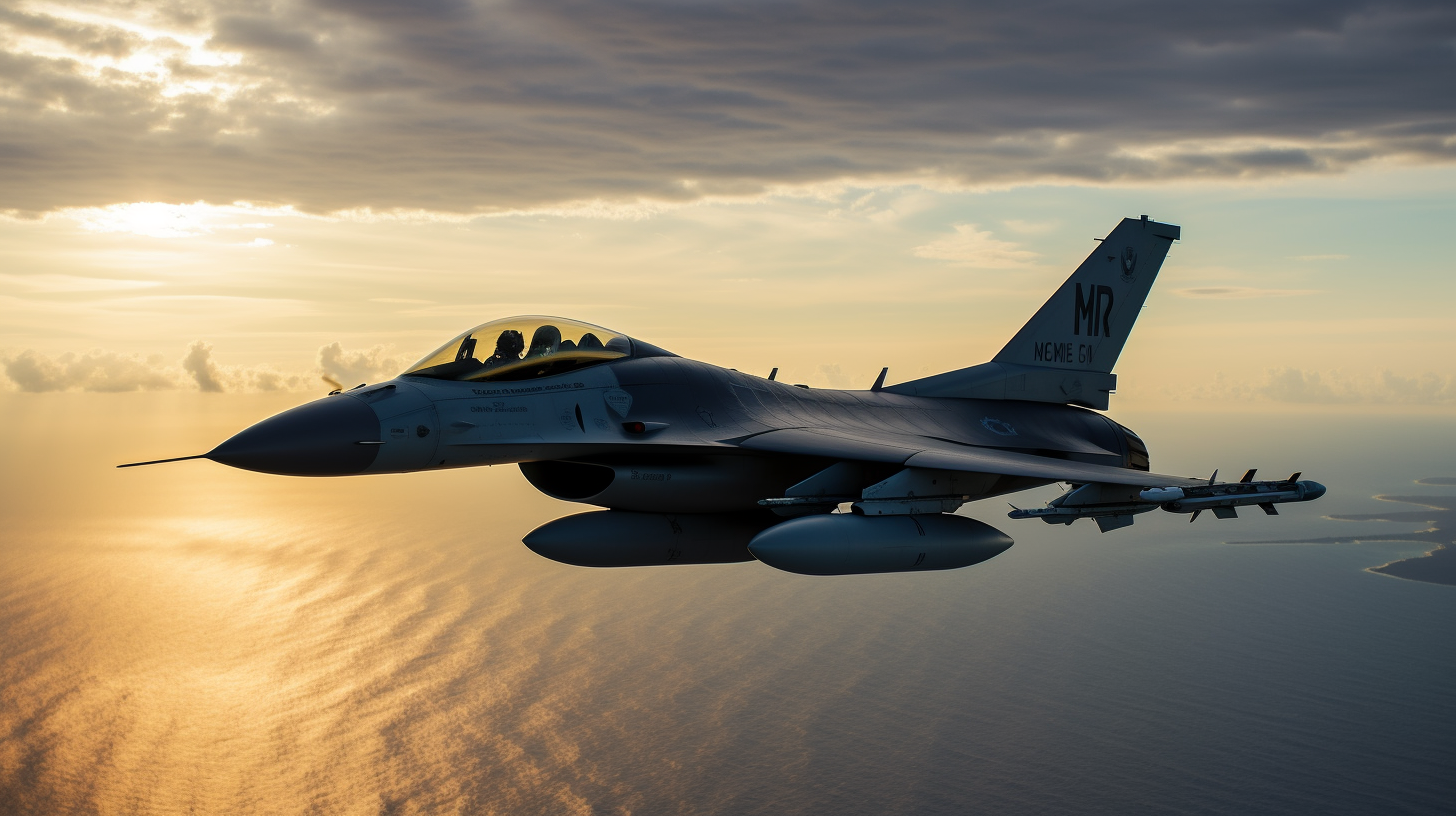
Have you ever dreamt of soaring through the skies, with the world beneath you and the horizon as your destination? Welcome to the thrilling, adrenaline-pumping world of fighter pilots.
Becoming a pilot isn’t just a career; it’s a calling. It’s about pushing the boundaries of what’s possible, testing your limits, and embracing the extraordinary.
But how does one become a fighter pilot? What does it take to join the ranks of these sky warriors?
Let’s embark on this journey together, exploring the path to becoming a fighter pilot.
Becoming a pilot isn’t just a career; it’s a calling. It’s about pushing the boundaries of what’s possible, testing your limits, and embracing the extraordinary.
But how does one become a fighter pilot? What does it take to join the ranks of these sky warriors?
Let’s embark on this journey together, exploring the path to becoming a fighter pilot.
Here are the steps you need to take to become a fighter pilot
- Join the Air Force
- Earn a Bachelor’s Degree
- Meet Officer Qualifications
- Attend Officer Training School (OTS)
- Pass Initial Flight Training
- Pass Undergraduate Pilot Training
- Accumulate Flight Hours and Experience
Understanding the Role of a Fighter Pilot
Imagine the rush of adrenaline as you ignite the engines of a state-of-the-art fighter jet. As a fighter pilot, you’re not just an aviator but a guardian of the skies. You’re entrusted with defending your nation’s interests, whether in peace or war.
This role demands more than technical skills; it requires courage, quick thinking, and a relentless pursuit of excellence.
Fighter pilots serve in different military branches, including the Air Force, Navy, and Air National Guard. Each branch offers unique opportunities and challenges but demands the same commitment and dedication.
The rewards? They’re beyond measure. The pride of serving your country, the respect you earn, and the thrill of flying some of the world’s most advanced aircraft. Plus, the earning potential and benefits are impressive.
But remember, this isn’t a job for the faint-hearted. It’s a lifestyle choice that demands your all.
This role demands more than technical skills; it requires courage, quick thinking, and a relentless pursuit of excellence.
Fighter pilots serve in different military branches, including the Air Force, Navy, and Air National Guard. Each branch offers unique opportunities and challenges but demands the same commitment and dedication.
The rewards? They’re beyond measure. The pride of serving your country, the respect you earn, and the thrill of flying some of the world’s most advanced aircraft. Plus, the earning potential and benefits are impressive.
But remember, this isn’t a job for the faint-hearted. It’s a lifestyle choice that demands your all.
Pilot Requirements
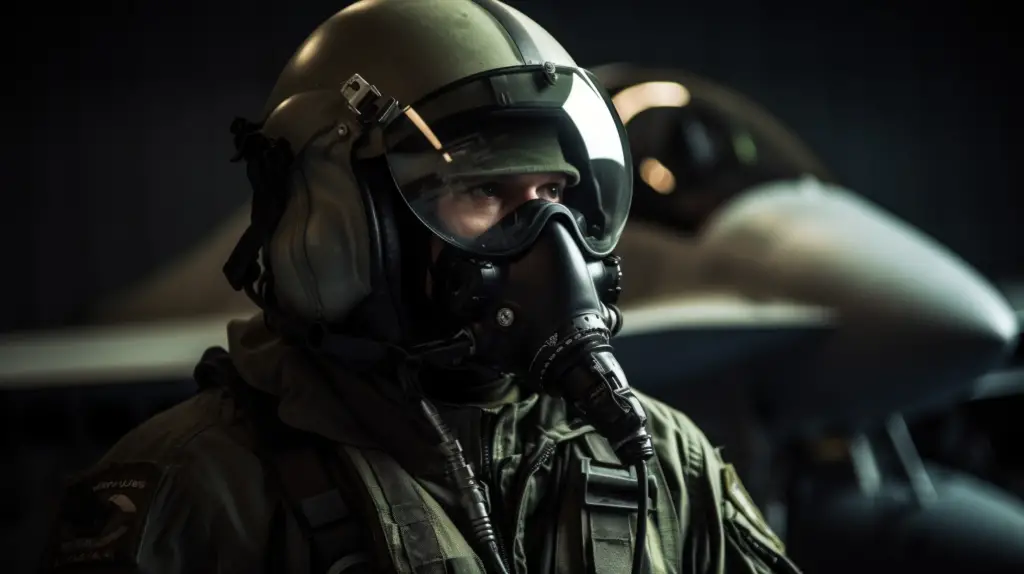
So, you’re ready to answer the call of the wild blue yonder? Great! But first, let’s talk about the requirements and qualifications to become a pilot.
Age, citizenship, and education are the basic prerequisites. You need to be a U.S. citizen, usually between the ages of 18 and 33, and you must have a bachelor’s degree or be close to completing one.
Physical and mental fitness are crucial.
You’ll undergo rigorous medical and psychological evaluations. Your vision(if you have bad vision read our in-depth article on “Can you be a pilot with glasses?”), hearing and overall health must meet high standards and you also need to be mentally robust to handle the pressures of the job.
Technical knowledge and skills are a given. You’ll need to ace the Air Force Officer Qualifying Test (AFOQT) and the Test of Basic Aviation Skills (TBAS).
Don’t worry if you still need to become a whiz kid. The military provides extensive training to help you master the skills you need.
Age, citizenship, and education are the basic prerequisites. You need to be a U.S. citizen, usually between the ages of 18 and 33, and you must have a bachelor’s degree or be close to completing one.
Physical and mental fitness are crucial.
You’ll undergo rigorous medical and psychological evaluations. Your vision(if you have bad vision read our in-depth article on “Can you be a pilot with glasses?”), hearing and overall health must meet high standards and you also need to be mentally robust to handle the pressures of the job.
Technical knowledge and skills are a given. You’ll need to ace the Air Force Officer Qualifying Test (AFOQT) and the Test of Basic Aviation Skills (TBAS).
Don’t worry if you still need to become a whiz kid. The military provides extensive training to help you master the skills you need.
Necessary Steps – Explained
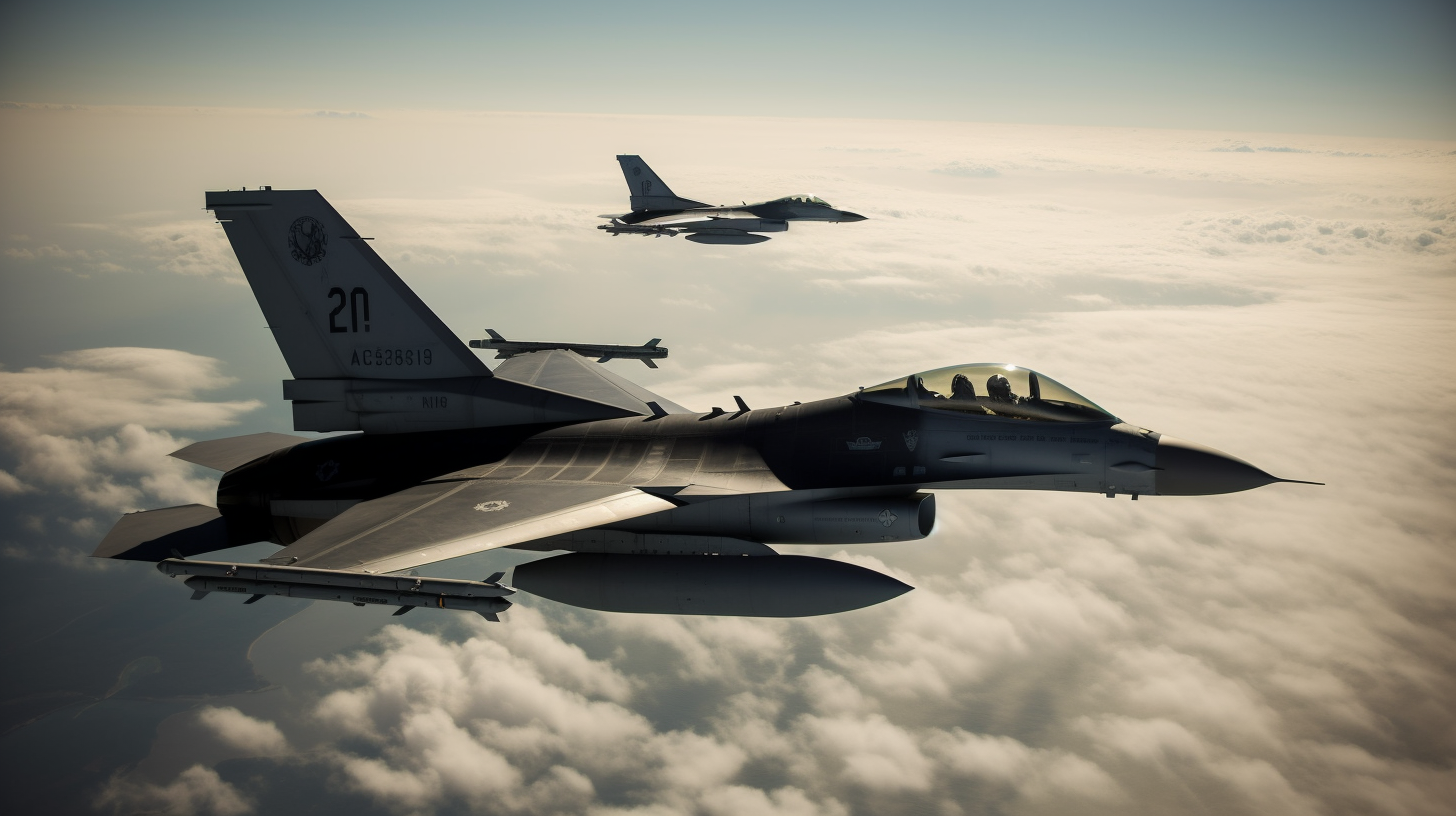
Now that we’ve explored what it means to be a fighter pilot and the qualifications required let’s dive into the heart-pounding, adrenaline-fueled journey of becoming one.
From enlisting in the military to the triumphant moment of joining a fighter squadron, each step is a thrilling adventure in its own right.
Ready to navigate this high-flying path? Let’s jet off and explore step by step how to become a fighter pilot.
From enlisting in the military to the triumphant moment of joining a fighter squadron, each step is a thrilling adventure in its own right.
Ready to navigate this high-flying path? Let’s jet off and explore step by step how to become a fighter pilot.
Join the Military
Your journey to becoming a fighter pilot begins with joining the military. Joining the military is a significant commitment, requiring both physical and mental strength.
You’ll need to choose a branch to serve in – the Air Force, Navy, or Air National Guard each have their unique opportunities and challenges.
You’ll need to choose a branch to serve in – the Air Force, Navy, or Air National Guard each have their unique opportunities and challenges.
Air Force
The Air Force is often the first choice for aspiring fighter pilots. It offers a wide range of flying aircraft and a strong focus on aerial combat and defense.
The Air Force also provides extensive training and educational opportunities, making it a great choice for those looking to push their skills to the limit.
The Air Force also provides extensive training and educational opportunities, making it a great choice for those looking to push their skills to the limit.
If taking off and landing on an aircraft carrier excites you, the Navy might be your best bet. Navy pilots often get the chance to fly various aircraft and are trained for air-to-air combat and ground operations support.
The Navy’s rigorous training program is designed to prepare pilots for the unique challenges of naval aviation.
The Navy’s rigorous training program is designed to prepare pilots for the unique challenges of naval aviation.
Air National Guard
The Air National Guard offers a unique opportunity to serve your country and community while maintaining a civilian career or pursuing further education.
As a fighter pilot in the Air National Guard, you’ll participate in various missions, from air defense to disaster response. The Guard provides comprehensive training and the opportunity to fly some of the most advanced aircraft in the world.
As a fighter pilot in the Air National Guard, you’ll participate in various missions, from air defense to disaster response. The Guard provides comprehensive training and the opportunity to fly some of the most advanced aircraft in the world.
Complete Officer Training School (OTS)
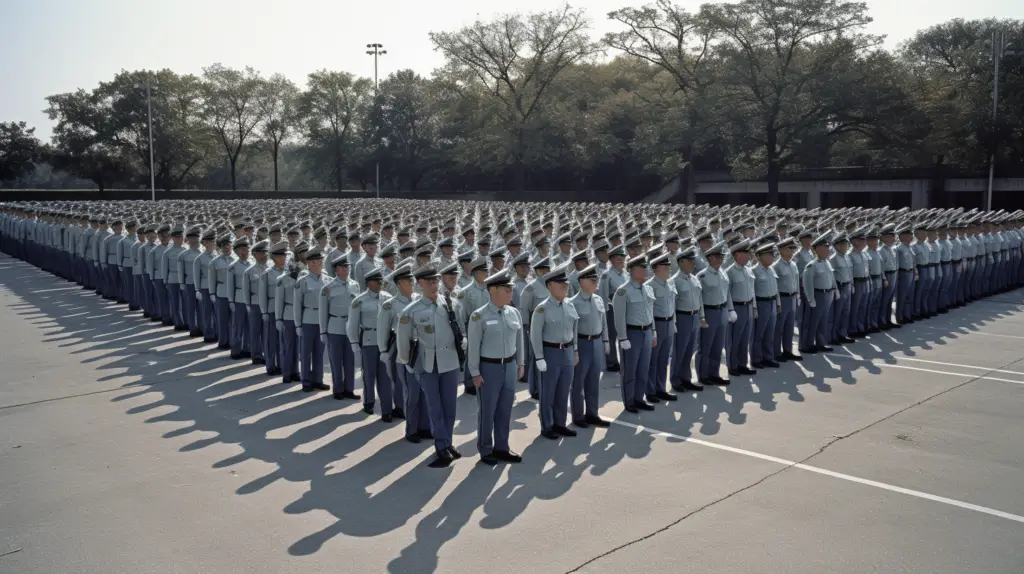
Once you’ve enlisted, the next step is to complete Officer Training School (OTS). This is where you’ll learn the leadership skills and military knowledge needed as an officer.
OTS is a challenging program that combines classroom learning with physical training. You’ll study various subjects, including military law, ethics, leadership principles, and physical conditioning. You’ll also participate in drills and exercises to develop teamwork and problem-solving skills.
Upon completing OTS, you’ll be commissioned as an officer and ready to move on to the next stage of your training.
OTS is a challenging program that combines classroom learning with physical training. You’ll study various subjects, including military law, ethics, leadership principles, and physical conditioning. You’ll also participate in drills and exercises to develop teamwork and problem-solving skills.
Upon completing OTS, you’ll be commissioned as an officer and ready to move on to the next stage of your training.
Undergraduate Pilot Training (UPT)
With OTS under your belt, you’re now ready to learn to fly. Undergraduate Pilot Training (UPT) is an intensive program that combines classroom instruction with practical flight training. You’ll start with ground school, where you’ll learn the basics of aerodynamics, navigation, and aircraft systems.
Then, you’ll move on to flight training, where you’ll learn to fly various aircraft under the guidance of experienced instructors. UPT is a demanding program, but it’s also incredibly rewarding. By the end of UPT, you’ll be a qualified military pilot.
Then, you’ll move on to flight training, where you’ll learn to fly various aircraft under the guidance of experienced instructors. UPT is a demanding program, but it’s also incredibly rewarding. By the end of UPT, you’ll be a qualified military pilot.
Fighter Squadron
After completing UPT, you’ll be assigned to a fighter squadron, where you’ll learn to fly a specific type of fighter aircraft. You’ll undergo further training to familiarize yourself with your assigned aircraft and its systems.
You’ll also participate in exercises and missions designed to develop your skills as a fighter pilot. Being part of a fighter squadron is a challenging but exciting experience. You’ll work closely with your fellow pilots and ground crew, and you’ll have the opportunity to test your skills in various scenarios.
It’s the final step in your training and the beginning of your career as a fighter pilot.
You’ll also participate in exercises and missions designed to develop your skills as a fighter pilot. Being part of a fighter squadron is a challenging but exciting experience. You’ll work closely with your fellow pilots and ground crew, and you’ll have the opportunity to test your skills in various scenarios.
It’s the final step in your training and the beginning of your career as a fighter pilot.
Pilot’s Military Training
Military training for pilots is rigorous, challenging, and designed to push you to your limits. It’s also where you’ll learn the skills and knowledge that will form the foundation of your career as a fighter pilot.
The training is divided into different phases, each designed to teach you specific skills.
The first phase is basic military training, where you’ll learn the fundamentals of being a soldier, including physical training, weapons training, and military law and ethics lessons.
Next, you’ll move on to officer training. Here, you’ll learn leadership skills, military customs and courtesies, and the principles of command and control.
The third phase is Undergraduate Pilot Training (UPT), where you’ll learn to fly. UPT is divided into two parts: primary and advanced. In primary, you’ll learn the basics of flight, while in advanced, you’ll specialize in a specific aircraft type.
Finally, you’ll undergo survival, evasion, resistance, and escape (SERE) training, where you’ll learn survival skills for different environments, how to evade capture, resist interrogation, and escape from captivity.
The training is divided into different phases, each designed to teach you specific skills.
The first phase is basic military training, where you’ll learn the fundamentals of being a soldier, including physical training, weapons training, and military law and ethics lessons.
Next, you’ll move on to officer training. Here, you’ll learn leadership skills, military customs and courtesies, and the principles of command and control.
The third phase is Undergraduate Pilot Training (UPT), where you’ll learn to fly. UPT is divided into two parts: primary and advanced. In primary, you’ll learn the basics of flight, while in advanced, you’ll specialize in a specific aircraft type.
Finally, you’ll undergo survival, evasion, resistance, and escape (SERE) training, where you’ll learn survival skills for different environments, how to evade capture, resist interrogation, and escape from captivity.
How Does Day In A Life Look Like?
Being a fighter pilot is more than a job; it’s a way of life. Every day brings new challenges and opportunities to learn. One day, you might practice dogfighting maneuvers in a training exercise; the next, you could be flying a real mission.
The lifestyle of a fighter pilot is demanding. You’ll often be away from home for extended periods, and the work can be physically and mentally taxing. But it’s also incredibly rewarding. There’s nothing quite like flying a multi-million dollar aircraft at supersonic speeds.
There are also plenty of opportunities for career advancement. As you gain experience, you could move into roles such as flight instructor, squadron commander, or higher leadership positions.
And, of course, flying some of the most advanced aircraft in the world is thrilling.
The lifestyle of a fighter pilot is demanding. You’ll often be away from home for extended periods, and the work can be physically and mentally taxing. But it’s also incredibly rewarding. There’s nothing quite like flying a multi-million dollar aircraft at supersonic speeds.
There are also plenty of opportunities for career advancement. As you gain experience, you could move into roles such as flight instructor, squadron commander, or higher leadership positions.
And, of course, flying some of the most advanced aircraft in the world is thrilling.
Preparing for Your Career
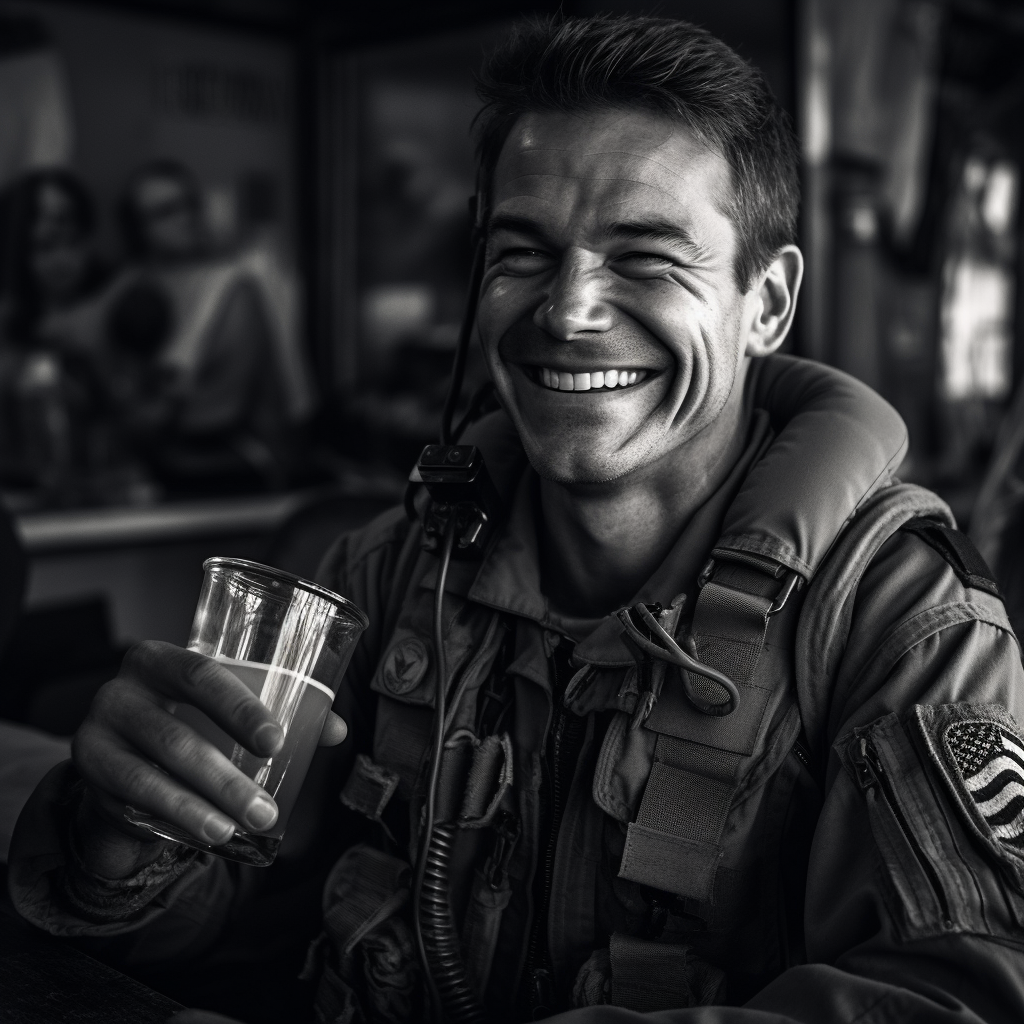
So, you’re ready to take the plunge and pursue your dream of becoming a fighter pilot. Great! But before you start, there are a few things you should know.
First, the application process for becoming a pilot is competitive. You’ll need to prepare thoroughly to give yourself the best chance of success.
Start by researching the requirements for the military branch you’re interested in. Make sure you meet the basic eligibility criteria and then start preparing for the tests you’ll need to take.
These include the Air Force Officer Qualifying Test (AFOQT) and the Test of Basic Aviation Skills (TBAS).
Next, consider getting some flight experience. While it’s not a requirement, having some basic flight skills can give you an edge in training. Plus, it’s a great way to determine if flying is really for you.
Finally, be prepared for a long and challenging journey. Becoming a fighter pilot isn’t easy, but you can make it happen with determination, hard work, and a little luck.
First, the application process for becoming a pilot is competitive. You’ll need to prepare thoroughly to give yourself the best chance of success.
Start by researching the requirements for the military branch you’re interested in. Make sure you meet the basic eligibility criteria and then start preparing for the tests you’ll need to take.
These include the Air Force Officer Qualifying Test (AFOQT) and the Test of Basic Aviation Skills (TBAS).
Next, consider getting some flight experience. While it’s not a requirement, having some basic flight skills can give you an edge in training. Plus, it’s a great way to determine if flying is really for you.
Finally, be prepared for a long and challenging journey. Becoming a fighter pilot isn’t easy, but you can make it happen with determination, hard work, and a little luck.
Wrapping up
Becoming a fighter pilot is a journey filled with challenges and rewards. It requires dedication, perseverance, and a willingness to push yourself to your limits. But if you have the drive and determination, you can join the ranks of the elite few with the privilege of calling themselves fighter pilots.
Remember, this is more than just a career. It’s a calling. It’s about being part of something bigger than yourself. It’s about serving your country and protecting your fellow citizens. And it’s about pushing the boundaries of what’s possible for yourself and the world of aviation.
So, are you ready to take to the skies? Are you ready to become a fighter pilot? If the answer is yes, then strap in, hold on tight, and prepare for the ride of your life. The sky isn’t the limit; it’s just the beginning.
Remember, this is more than just a career. It’s a calling. It’s about being part of something bigger than yourself. It’s about serving your country and protecting your fellow citizens. And it’s about pushing the boundaries of what’s possible for yourself and the world of aviation.
So, are you ready to take to the skies? Are you ready to become a fighter pilot? If the answer is yes, then strap in, hold on tight, and prepare for the ride of your life. The sky isn’t the limit; it’s just the beginning.
FAQ´S
How long does it take to become a fighter pilot?
Becoming a fully qualified fighter pilot typically takes about two years of training after joining the military, which includes time spent in officer training, undergraduate pilot training, and specialized flight training.
Is 30 too late to become a fighter pilot?
Can anyone learn to fly a fighter jet?
What is the maximum height for a fighter pilot?
What qualifications do you need to be a fighter jet pilot?
